Table of Contents
There are two basic approaches you can take to reading Arabic as a second language.
The first is an extensive reading approach. The main goal of extensive reading is not to learn lots of new words. If the reading material is level-appropriate for you, you should mostly be seeing words and grammatical structures that you’ve already learned. Seeing them repeatedly in context will help you consolidate what you’ve learned and build fluency. It’s essentially an opportunity for large amounts of input. While engaging in extensive reading in Arabic, you are not studying but rather putting what you already know to use.
The second approach is intensive reading. This is what we think of as literally ‘studying’ a language–by analyzing a challenging text and trying to learn new vocabulary from it.
Of course, in reality, we often combine these two approaches, reading extensively to build fluency while also actively trying to learn new words we encounter. Whether we’re reading intensively or using a mixed approach, there are some points to keep in mind to make vocabulary learning efficient and enjoyable.
Chunking
Words don’t naturally exist in isolation. They’re usually part of a sentence and take on a role as part of the subject, predicate, an adverbial phrase, and so on. They form phrases, expressions, idioms, and collocations (words that naturally and frequently appear together). They may require a certain preposition to connect to the following word. This is a major advantage of learning vocabulary while reading rather than by studying flashcards or lists of individual words.
Avoid recording individual words in your notes as much as possible. Look at other words surrounding it in the sentence. Is it a verb that requires a preposition before its object? Is it a noun that is logically the subject or object of a certain verb? Is it a noun phrase that expresses a single idea or forms a time expression? Record meaningful chunks of language, groups of words. That way, when you go back and review your notes, you’ll be able to see not only the new word but how it’s used. For example, imagine you come across بُكْره بِاللّيْل in a text, and بُكْره is a new word for you. You work out that, together, these words mean ‘tomorrow evening.’ But if you just record بُكْره, you won’t be able to remember how to say ‘tomorrow evening.’ You might literally translate it from English and say something like بُكْره ليْل. Translating word for word is a common cause of learners’ mistakes. Instead, whenever possible, you want to notice and learn chunks of meaningful language that form natural collocations used by native speakers. Another example: You come across the new-to-you word اِهْتمّ (to be interested), but be sure to make a note of the preposition that its object is governed by: بِـ. Otherwise, you won’t be able to use this word yourself in a sentence correctly.
You may know every word in a sentence, but don’t make the mistake of mentally checking them all off as ‘known.’ You may know all of the words, but did you understand the sentence? Words often have more than one meaning or take on different meanings in expressions or phrases. Their usage might be idiomatic or metaphorical. Do you understand what they mean all together? You come across خفيف الدّمّ. Okay, خفيف is ‘light.’ Check! دمّ means ‘blood.’ Check! Um, wait… what? You might be able to look up these words and find the expression in a dictionary or online. If you’re reading one of Lingualism’s Arabic readers, you could look over at the parallel translation and quickly see that it means ‘funny.’ Or you might be able to work out the meaning yourself from the context.
Context
Don’t immediately stop as soon as you encounter a new word. Read on at least another sentence or two. Often, clues in the text will help you guess (or recall) the meaning. Imagine the word as a blank. What could logically fit there?
Repeatedly stopping when you encounter a new word the first time you read a text breaks up the flow and makes it harder to follow or enjoy what you’re reading. Instead, consider just highlighting or underlining new words as you continue to read. Once you’ve finished an entire page, or chapter, or story, you can go back a second time and focus on the words you marked.
Limiting Yourself
Resist the urge to look up or try to learn every new word you encounter. It’s okay, especially the first time you read a text, not to understand every detail. Just keep reading. Of course, if you see a word repeatedly, you can assume it is a key concept (or high-frequency), and you should probably understand it or risk misunderstanding the subject you’re reading about.
The human mind has its limits, and trying to learn too much will end up being counterproductive, as you spend more time recording information and trying to memorize it only to forget it (or never learn it in the first place). You’ll be a more efficient language learner if you limit the number of new lexical items (words or phrases) you try to learn in each study session. My personal rule of thumb is to limit myself to 5-10 new items per day. This quickly adds up to hundreds or thousands of new words in your vocabulary with consistent language study. Remember: Learning a language is a marathon, not a sprint! So, pace yourself.
Choose your lexical items thoughtfully. Since you can’t learn every new word you encounter, decide which are the most useful and interesting for you now, at your level, and for your purposes. It makes sense to focus your energy and mental resources on learning practical lexical items. You may look up a word but decide not to bother trying to write it down and learn it. It may be very low frequency, which means you’re unlikely to encounter it again anytime soon and will end up forgetting it in the meantime. Vocabulary is best learned when “its time has come.” If, for example, at your current level, you’re learning words for ‘table’ and ‘run,’ you don’t need to know the words for ‘manuscript’ or ‘procrastinate.’ Not yet. Focus on higher-frequency words that you’ll encounter more often and need to learn first.
Be comfortable not understanding every detail or only having a vague idea about a word or sentence’s meaning. It’s okay. Your goal is not necessarily to understand 100%, especially if the text is particularly challenging for you and you’re reading it for the first time. You’ll have opportunities to revisit the text–tomorrow and months down the line–and you might be surprised how much more you can understand then.



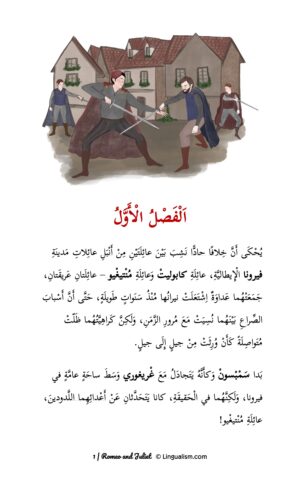

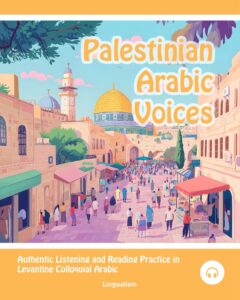
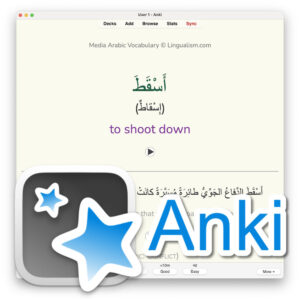
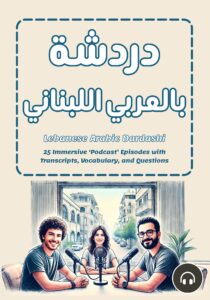
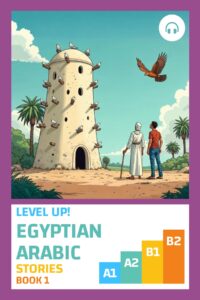
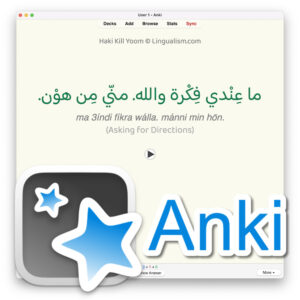

The “marathon, not a sprint” comment is well made. I’ve found over my years of Arabic learning that it is demoralising to expect to measure improvement in days or weeks. It’s far better to compare over 6 months or a year at a time. If you work consistently, you’ll see clear and inevitable improvement which really encourages you to carry on, and by measuring over longer periods, those odd weeks when you just can’t face it get ironed out. 5 words a day is over 1800 words a year, and that’s enough to be able to communicate at a viable level. If you can do more, that’s great. If you do fewer, no matter – you still know more than you did last year.
I’ve certainly found that the accessibility, clarity and integrated nature of the Lingualism resources really motivates me to keep going. The parallel readers, with supporting audio (I’m doing Shami), are the best dialect resources I’ve seen so far.
Stick with it, fellow learners!
@Andy
Learning شامي Shami / Levantine Arabic is a very good choice